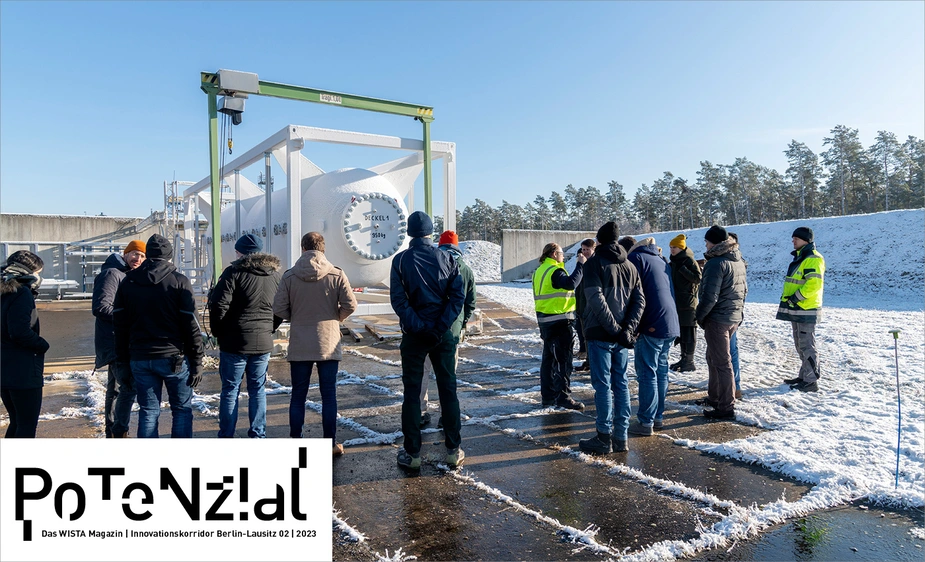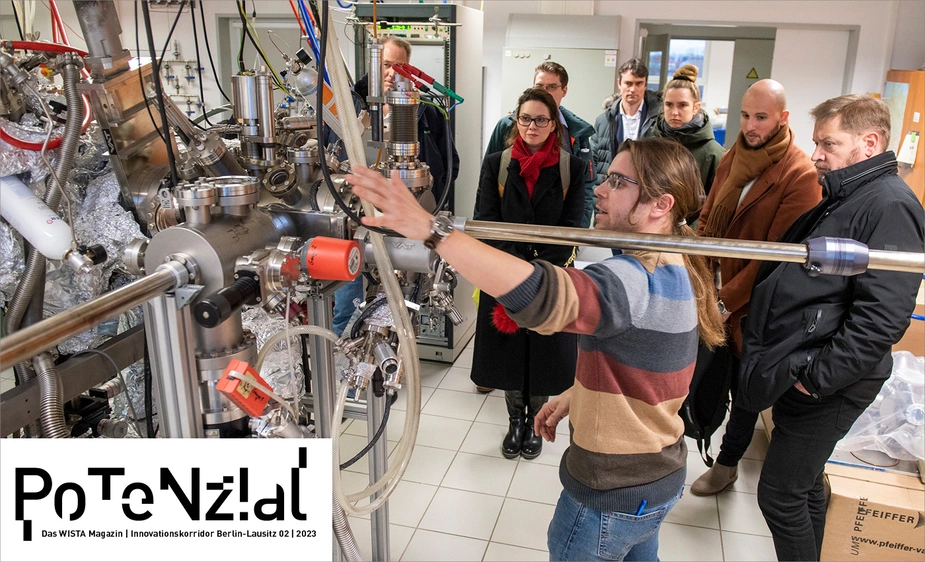Hydrogen – yes but safer!
The jointly organised research training group “Trustworthy Hydrogen” by BAM and BTU is committed to training experts who will ensure a safe transition into the hydrogen economy
It is a key axis of the Berlin-Lusatia Innovation Corridor: A linear distance of 100 kilometres lies between the campus of the Federal Institute for Materials Research and Testing (BAM) in Berlin Steglitz and the Graduate Research School of the Brandenburg University of Technology (BTU) Cottbus-Senftenberg. Between these two points lies a vast wooded area, close to Baruth/Mark, where BAM operates a testing site for technical safety in Horstwalde. It lies inside the corridor – the detour it takes to get there extends the beeline by just 10 kilometres.
For the first seven PhD students of the new research training group “Trustworthy Hydrogen”, the axis between Steglitz, Horstwalde and Cottbus is a beeline into the future. Not only have BAM and BTU brought together concentrated know-how on the safe handling of hydrogen as an energy carrier, but they also make their technical infrastructure available to the participants. This includes laboratories at the BTU and BAM facilities in Steglitz and Adlershof as well as the above-mentioned testing site.
The research training group is a key building block for entering an era of hydrogen that is safe. It is a matter of ensuring trustworthy handling of this extremely reactive energy carrier, the tiny atoms of which like to seep through and volatilise using any leak available. The systems must be fully leak-proof to be able to store hydrogen in underground caverns, ships, or vehicle tanks, or to carry out electrolysis right there and then at wind farms. The same applies to the pipelines and fittings of the hydrogen infrastructure, ranging from electrolysers to transportation and storage, and, lastly, deployment.
Interdisciplinary and interconnected globally by design, this is what BAM and BTU have been investigating together now for many years. The know-how resulting from this research must now be transferred to the market as quickly as possible. The move away from Russian natural gas was the latest in a series of events underscoring that hydrogen was going to be the means of choice to store electricity coming from wind and solar and importing it from all over the world. However, to implement a transformation of such a global scale, smart minds are needed: Highly qualified specialists who will be responsible for safeguarding trustworthy future handling of hydrogen at the technical, administrative, normative, and regulatory levels. A cross-cutting issue along the entire value creation chain is safety. For this reason, the research training group is also investigating the entire chain, including framework conditions, safety standards, issues of collective acceptance, science communication, and policy advice.
Katrin Patzelt, a BAM expert for the safety of energy carriers, and Robert Rode, manager of the Graduate Research School in Cottbus, coordinate the training scheme. “In addition to the first seven PhD students, we also have some members that are working on their dissertation at BAM and BTU but have started doing so before the research training group was launched,” she explains. Together, they are all getting to know the institutes, laboratories, and the testing site. All the places at which they will conduct their research and deepen their expertise. “We focus on communication and networking,” says Patzelt. Since some participants are from Bangladesh, Morocco, and Iran, everyone here speaks English to each other. They all share an interest in building a post-fossil fuel economy. Since this is a global project that can only be achieved when working as a team, they all keep each other in the loop, jointly discuss solutions, and look over each other’s shoulders during their experiments. Interdisciplinarity here is an embodied practice that aims at preventing entrenchment between approaches from chemistry, physics, materials science, social science, and humanities.
Patzelt tells us about how the PhD students all presented their projects at the kick-off event. “This resulted in many lively discussions, intersections, and overlap between the projects,” she reports. The spark for cooperation had been ignited. However, the hydrogen experts will have to put all their knowledge and skill towards keeping real sparks away from their research objects. Every child learns at school what a spark does to a balloon filled with hydrogen. The hydrogen economy will only be successful in the long run if this type of safety is guaranteed. It is to this end that the prospective specialists and leaders of the research school are attaining an in-depth understanding of processes, materials, and sensors.
By Peter Trechow for POTENZIAL


